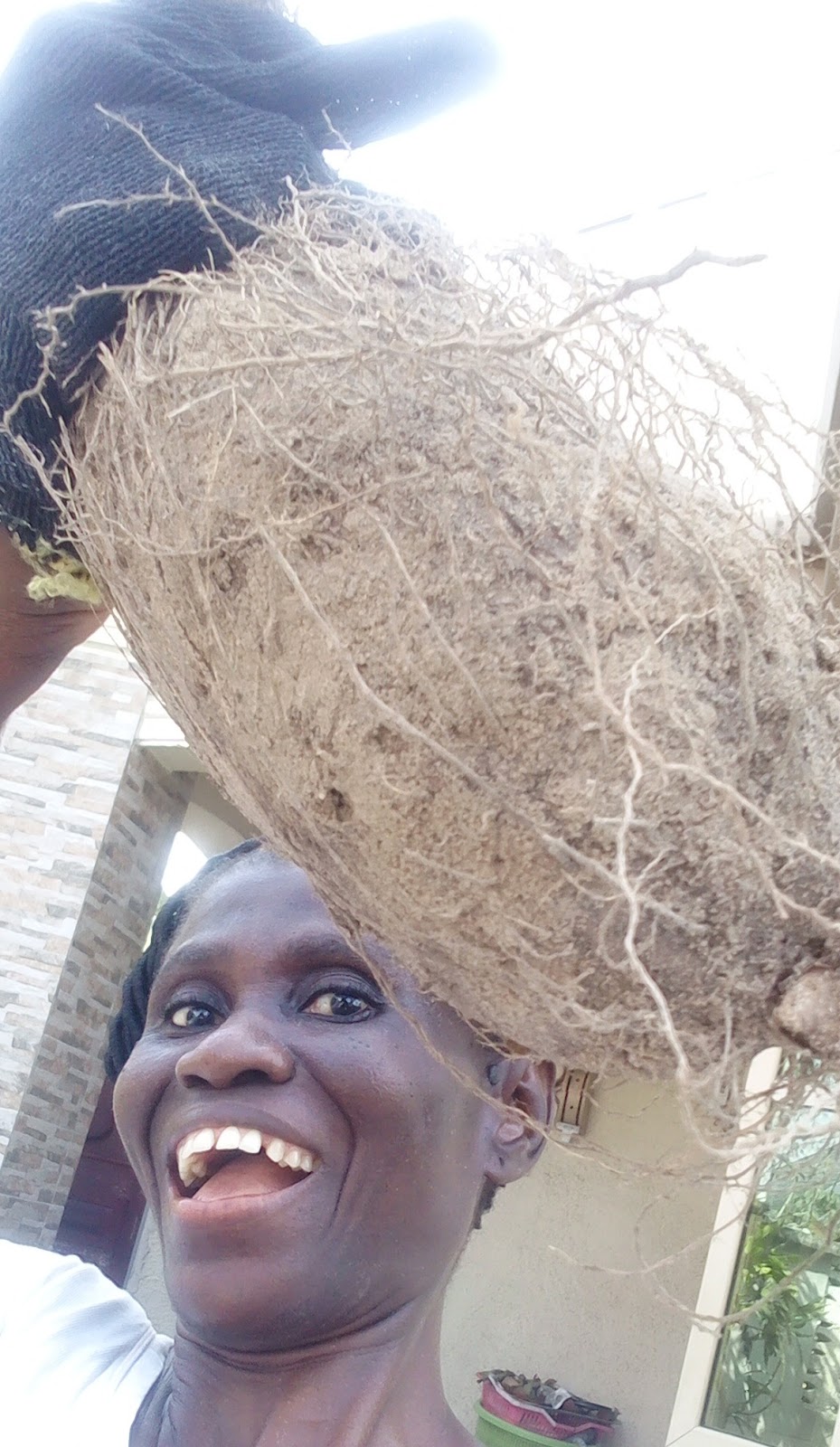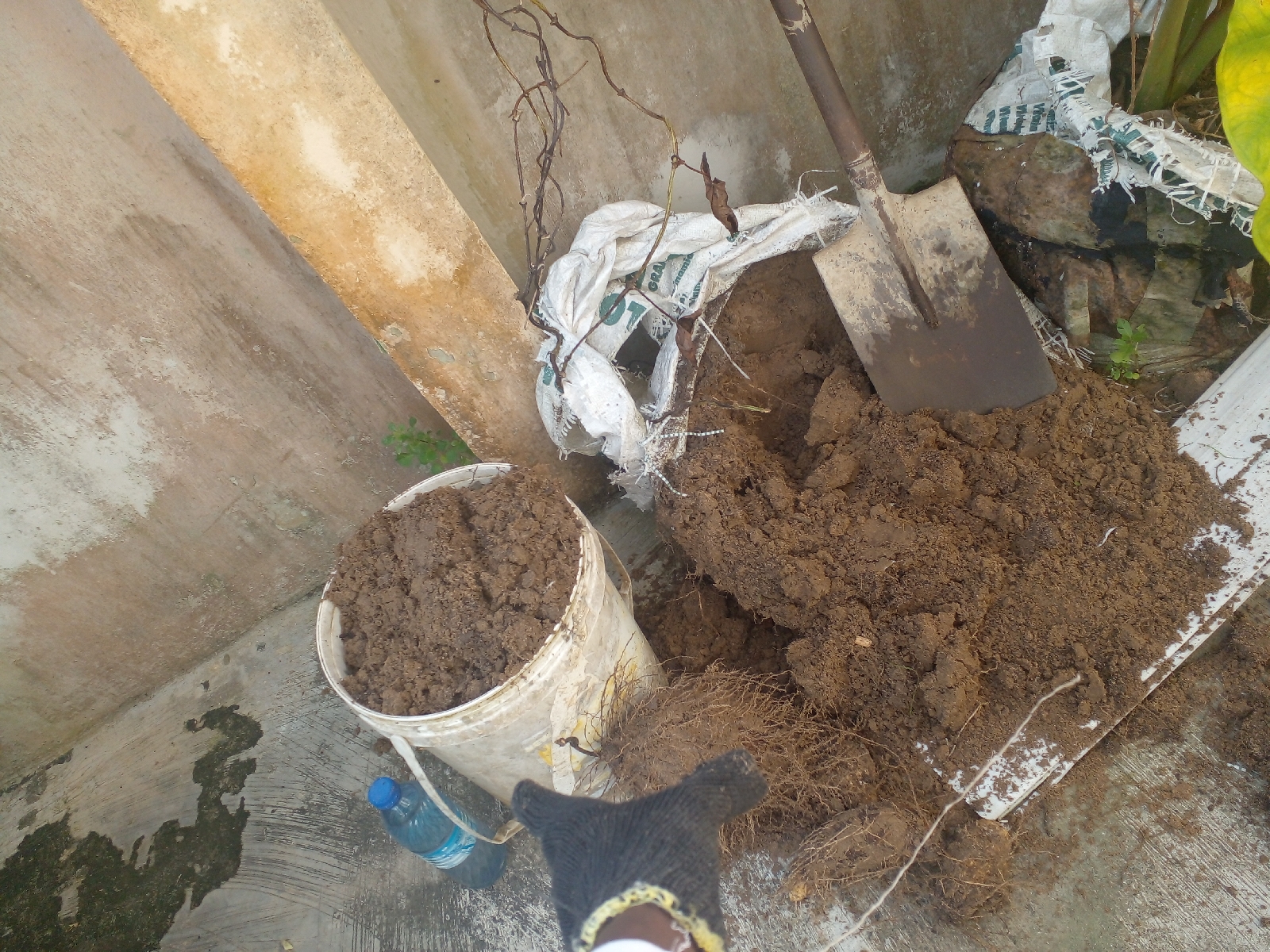...identifying mango trees for variety with more economic value
Actually I prefer water yam because its lighter on the tummy as pounded yam than white yam.
Some days ago I also harvested the remaining pods of beans which had turned brown. I cooked it - just a plate- so healthy and it was so very delicious- mini-garden grown beans.
IDENTIFYING MANGO TREE WITH MORE ECONOMIC VALUE
But of course this mini-garden is not just about healthy foods to eat - certainly not enough anyway. It's about researching into agro-based health and beauty solutions and finding better ways to grow plants even when constrained by space especially in an urban area.
One of the constraints is getting trees in containers to fruit - yet to achieve that. I intend to replant some fruit trees currently growing in sacks into very big plastic containers.
Apart from the small almond tree, I currently have three mango plants that have passed the seedling stage into mini-trees all planted in sacks - mangoes have different varieties - there are hard pulp ones that can be easily cut and eaten like snacks, included in fruit salads or dried and packaged as fruit snacks .
There are soft pulp ones that are juicy - ideal for Smoothies.
Which one should I replant in the big drum plastic? How do I even differentiate them?
I will need to research more into identifying mango varieties so that I know the one to replant in the bigger drum.
I am not too sure but would be observing more keenly- I noticed two of the small mango trees have grown slightly purplish-brown leaves apart from the green leaves. These leaves are not diseased - they are healthy leaves of a different colour.
But I don't think one of the mango trees which is months older than the others has ever grown that colour of leaves - so I am wondering if it's indication that it is of different variety from the other two. If so which one is the hard-pulp mango and which is the soft-pulp?
I prefer the hard-pulp for obvious reasons - its more durable with better chances of being processed into dried snack. Therefore it should have more economic value .
So I have a whole lot of researching to do in identifying the mango varieties from the leaves or the plant. If I can I would have loved to replant all the three mango trees.
There is a fourth one still at a very small seedling stage - also in a sack - Bush mango - very big, hardy but still soft pulp mango - I can identify that because I specifically bought that mango.to plant after chewing - maybe it may be the variety that produces 'Ogbono' used in making draw soup. That would really be of huge economic benefit but it must be replanted to get to fruiting stage.
Thank God I am still able to grow some things despite the space constraint rather than waiting in frustration for farmland - it involved some creative thinking - Necessity sure is the mother of invention.
#yamharvest
#beansharvest
#minigardenharvest
#identigyingmangovarieties
#treesofeconomicvalue
#pureagriculture
#agricutureversusgoodhealth
#minigardenresearch
#growingcornindryseason
#growingcornallyearround
#throughbredseeds
#purebredseeds
#agriculturalmedicine
#gardeningindryseason
#growingcropsindryseason
#growingcropsinsacks
#growingmaizeinsacks
#spaceconstrainedgarden
#gardeningincementedpremises
#gardeninginsacks
#growingplantsinsacks
#minigarden #urbangarden #urbangardening
#minigardening #integratedgardening #gardening #gardeninginsmallspaces #integratedgardeninginsmallspaces #spaceconstrainedurbangardening
#intercroppinginsoilsack.
#growingcornindryseason






No comments:
Post a Comment